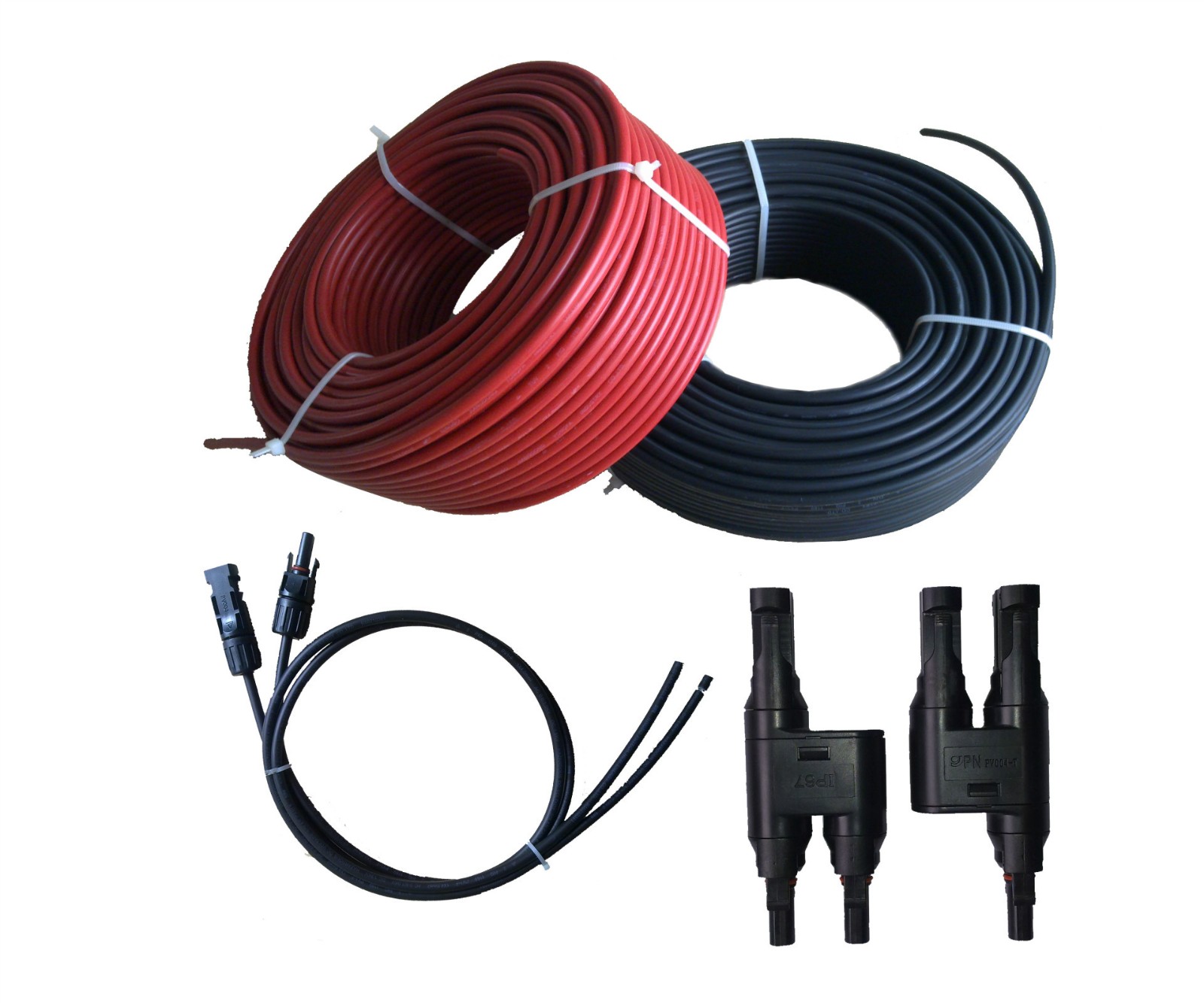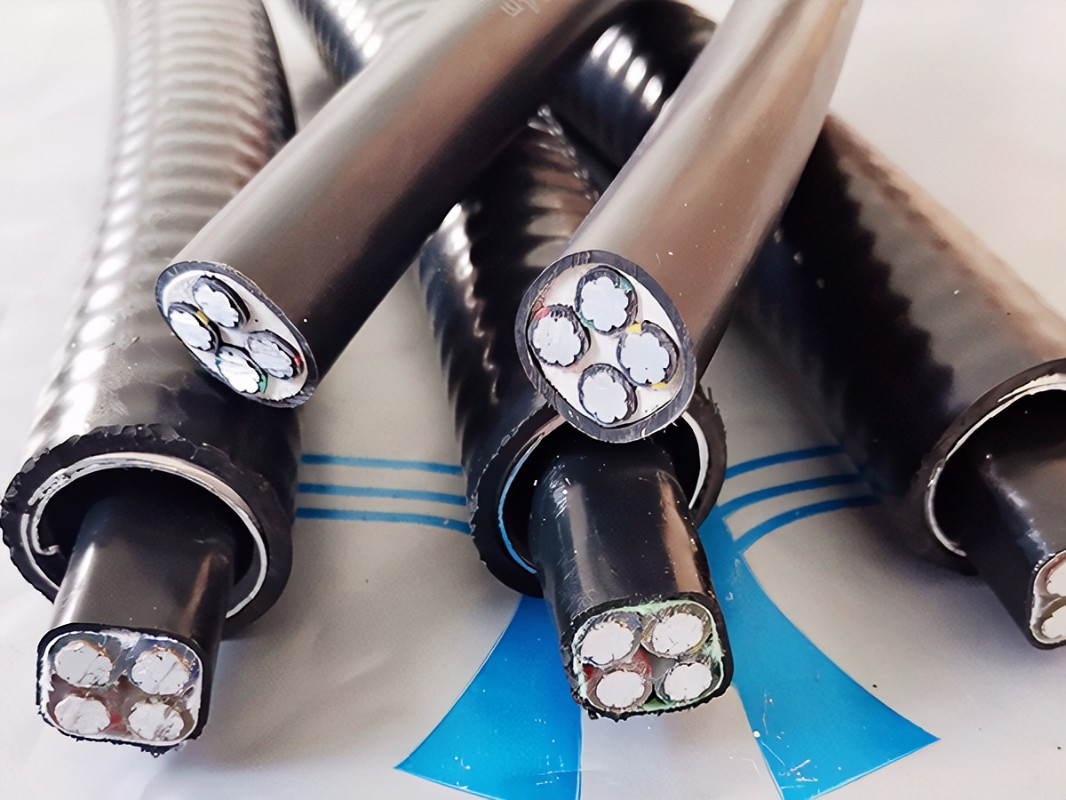In the last decade, the prices of modules and inverters in PV systems have fallen by 90%, which has made a significant contribution to the overall cost reduction of PV systems, but the cost of cables has not fallen. In large projects, cables account for 10% of the cost of the system, which is higher than inverters. As long as the proper design and installation, under the premise of ensuring the normal operation and safety of the system, part of the photovoltaic AC cable using aluminum alloy cables can reduce some of the cost.
Photovoltaic power station cables, that is, we often say photovoltaic solar cables, are generally divided into DC cables and AC cables.
The characteristics of photovoltaic cables are determined by their cable-specific insulation material and sheath material, called cross-linked PE.
After irradiation by an irradiation gas pedal, the molecular structure of the cable material will be changed to provide its individual properties.
Among them, DC cables between modules and modules and DC cables between modules and inverters are generally required to use PV-specific DC cables.
From the inverter out to the AC distribution cabinet between the cable and, the distribution cabinet to the transformer between the cable, there is no requirement to use what cable.

ZMS aluminum alloy cable is a new material power cable with AA8030 series aluminum alloy material as a conductor.
The resistivity of aluminum alloy is between aluminum and copper, higher than copper, and slightly lower than aluminum, under the premise of the same current-carrying capacity, the weight of the same length of aluminum alloy conductor is only half of copper.
That is to say, when the cross-sectional area of the aluminum alloy conductor is 1.5 times that of copper, aluminum alloy cables and copper cables are the same, achieving the same current-carrying capacity, resistance, and line loss.
The metal surface interacts with oxygen to generate different metal oxides.
Aluminum oxides can constitute a dense surface with a certain hardness of the protective film. Copper oxides, commonly known as copper green, are in between the above two and are toxic substances.
This is the most important aspect. Typically, copper cables are more than three times more expensive than aluminum cables.
Take the .6/1kV voltage level, the price of YJLHV aluminum alloy cable aluminum cable, and YJV copper cable, for example, the price of aluminum cable is 2.7 RMB, while the price of copper cable is as high as 7.52 RMB.
Generally speaking, the cost of aluminum alloy cable is about 25%~50% of copper core cable, and the cost advantage of using aluminum alloy cable is relatively large.
ZMS Cable Test Comparison
In a 400kW village-level power station for poverty alleviation, the distance from the AC distribution cabinet to the step-up transformer is 1500 meters, and the maximum output current of the 400kW power station is 580A.
If copper cables are used, two 150-square-foot cables are required for each phase, and six cables are required for three phases, with a total length of 9,000 meters and a price of 864,000 RMB.
If you use an aluminum alloy with two 240 square, the total length is also 9000 meters, the price is 450,000, can save 414,000 yuan, and 240 square of aluminum wire than 150 square of copper wire loss is lower.
This kind of cable is made of high elongation aluminum alloy material, in pure aluminum by adding boron and other rare-earth trace element materials, and by roller-pressing technology and special annealing process, so that the cable has better flexibility.
When its surface is in contact with air, it can form a kind of thin but strong oxidized layer, which can resist all kinds of corrosion.
Even when overloaded or overheated for a long period, the stability of the connection can be guaranteed. The cost is slightly higher than ordinary aluminum alloy cable by about 10%.

Aluminum cables can be considered for long-distance overhead lines, underground cable trenches with relatively large spaces, and places with reliable fixed bridges.
Copper has a melting point of 1080°C, while aluminum and aluminum alloys have a melting point of 660°C, so copper conductors are a better choice for fire-resistant cables.
Some fire-resistant aluminum alloy cables on the market nowadays have passed the relevant international standard tests, but their material properties are not very different from those of aluminum cables.
If in the center of the fire, that is, the temperature is higher than the melting point of aluminum alloy and aluminum cables, regardless of what kind of insulation measures are taken by the cable, the cable will melt in a very short period, the loss of conductive function.
Therefore, aluminum alloy should not be used as a fire-resistant cable conductor, and should not be used in densely populated urban distribution networks, buildings, factories, and mines.
Relative to aluminum core cable, copper core flexibility is good, the allowable bending radius is small, and repeated bending is not easy to break.
So more bends, through the pipe or complex line occasions, should not use aluminum cable.
As the terminals of the electrical switching equipment are copper, copper, and aluminum directly connected to the electricity will produce a chemical reaction of the primary battery: higher reactivity of the aluminum will accelerate the oxidation, resulting in high resistance at the joints, and the current-carrying capacity becomes low.
Therefore, it is necessary to take some measures when connecting copper and aluminum, such as the use of copper-aluminum transition terminals or copper-aluminum transition terminal blocks, to eliminate the electrochemical reaction.
In the absence of specific requirements, the use of aluminum alloy cable is a more common choice.
The properties of the aluminum alloy material itself will help the project save costs and reduce more safety hazards.